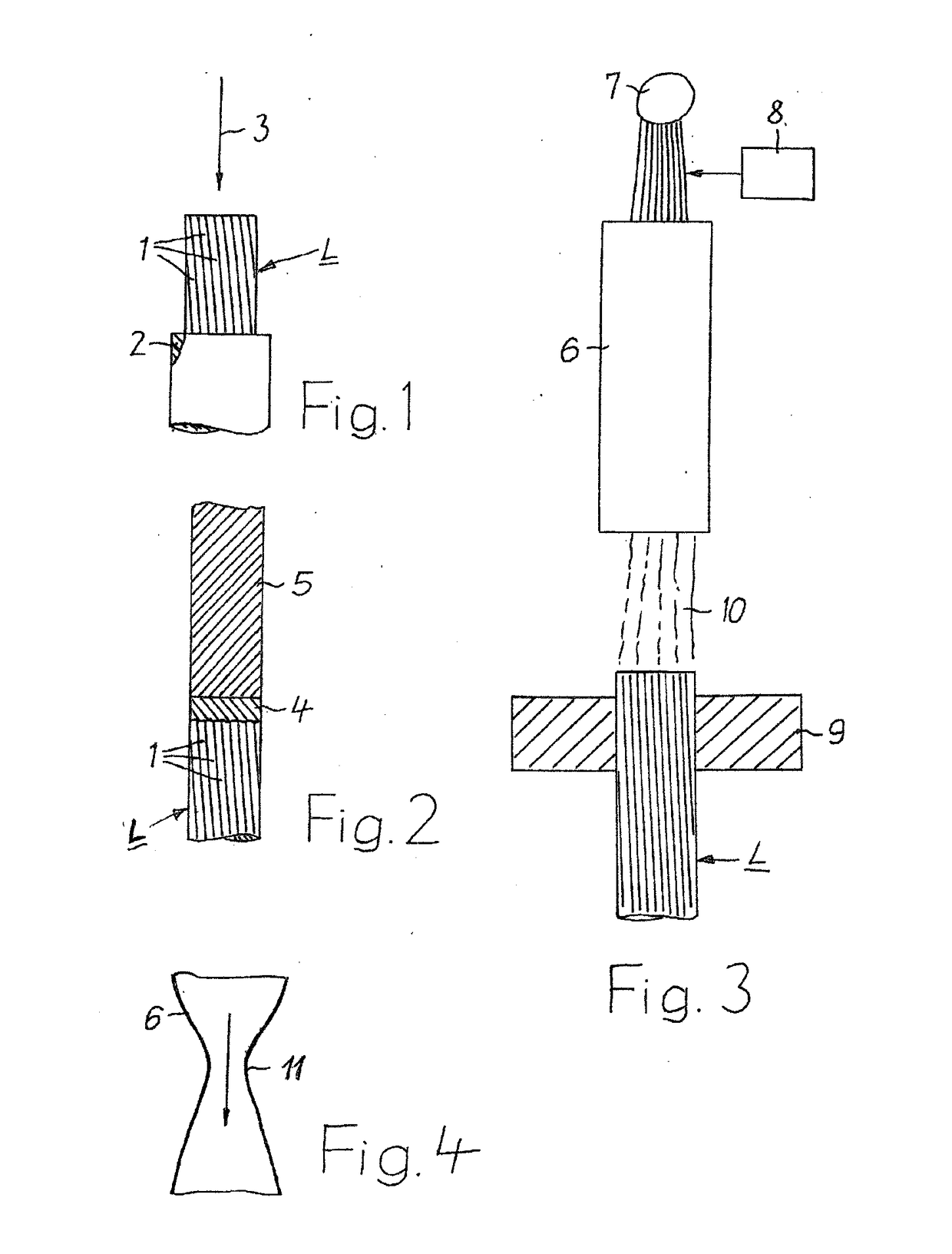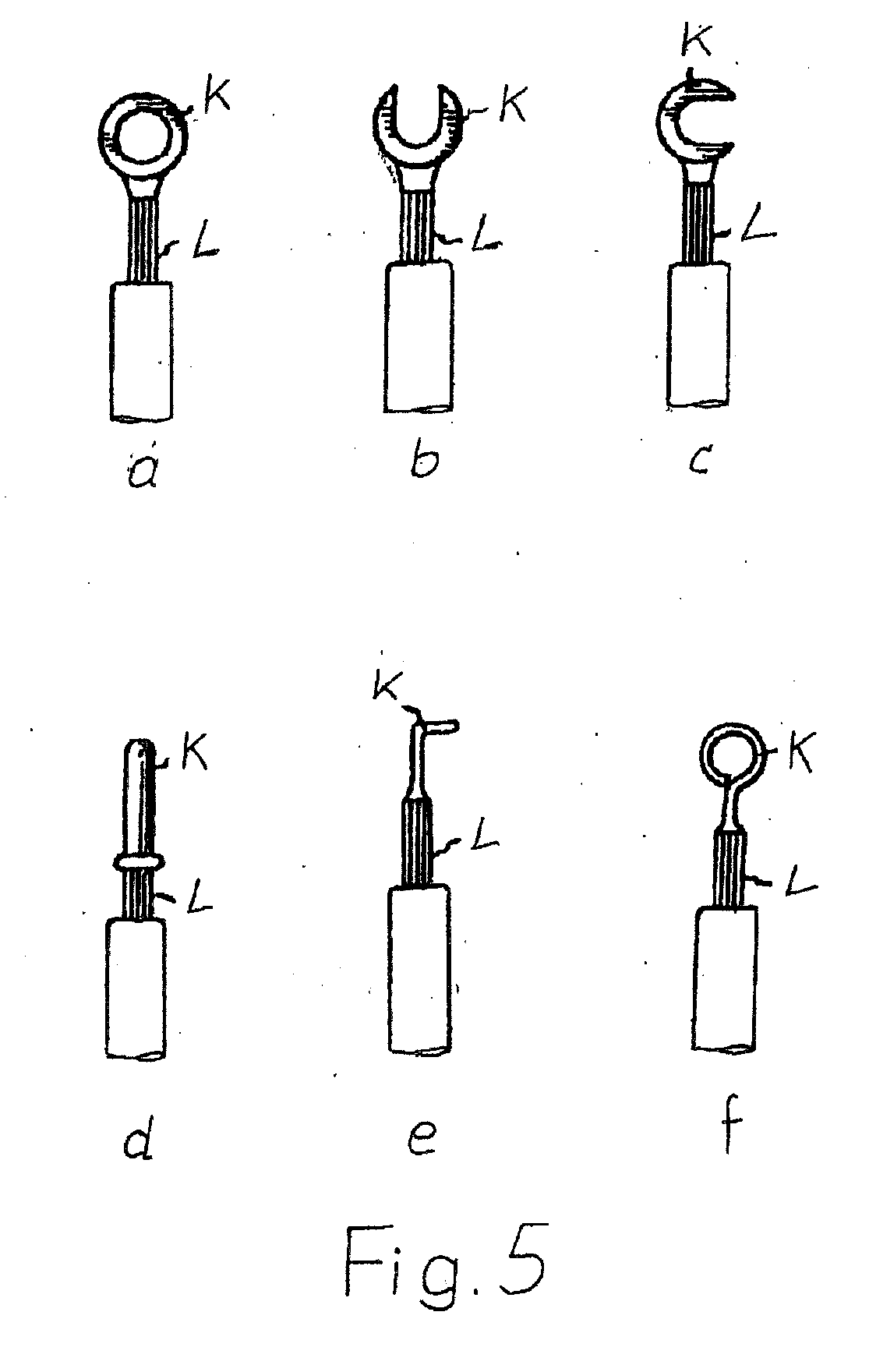Method for attaching a contact element to the end of an electrical conductor
a technology of contact elements and electrical conductors, which is applied in the direction of connection of contact members, connection contact member materials, contact member manufacturing, etc., can solve the problem of restricting the method to the material, and achieve the effect of excluding the effect of corrosion on the contact poin
- Summary
- Abstract
- Description
- Claims
- Application Information
AI Technical Summary
Benefits of technology
Problems solved by technology
Method used
Image
Examples
Embodiment Construction
[0022]In FIG. 1, the end of an insulated electrical conductor L is shown which is embodied in the illustrated exemplary embodiment as a stranded conductor which comprises a plurality of individual wires 1. The conductor can, however, also be a solid conductor. Insulation 2 which surrounds the conductor L is removed therefrom at its end. Particles of electrically conductive material are applied to the front side of the conductor L, in its axial direction corresponding to the arrow 3, at a high speed which is advantageously higher than the speed of sound. The corresponding method will be further explained below in more detail with reference to FIG. 3.
[0023]The method according to the invention at first is used to generate, at the end of the conductor L, a compact structure which is indicated in FIG. 2 and illustrated as a composite body 4 which is shown in hatched form and is composed of the material of the conductor L, on the one hand, and, on the other hand, of the metal which is ap...
PUM
| Property | Measurement | Unit |
|---|---|---|
| electrically conductive | aaaaa | aaaaa |
| speed | aaaaa | aaaaa |
| electrical | aaaaa | aaaaa |
Abstract
Description
Claims
Application Information
 Login to View More
Login to View More - R&D
- Intellectual Property
- Life Sciences
- Materials
- Tech Scout
- Unparalleled Data Quality
- Higher Quality Content
- 60% Fewer Hallucinations
Browse by: Latest US Patents, China's latest patents, Technical Efficacy Thesaurus, Application Domain, Technology Topic, Popular Technical Reports.
© 2025 PatSnap. All rights reserved.Legal|Privacy policy|Modern Slavery Act Transparency Statement|Sitemap|About US| Contact US: help@patsnap.com



